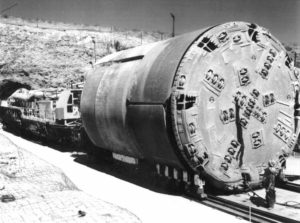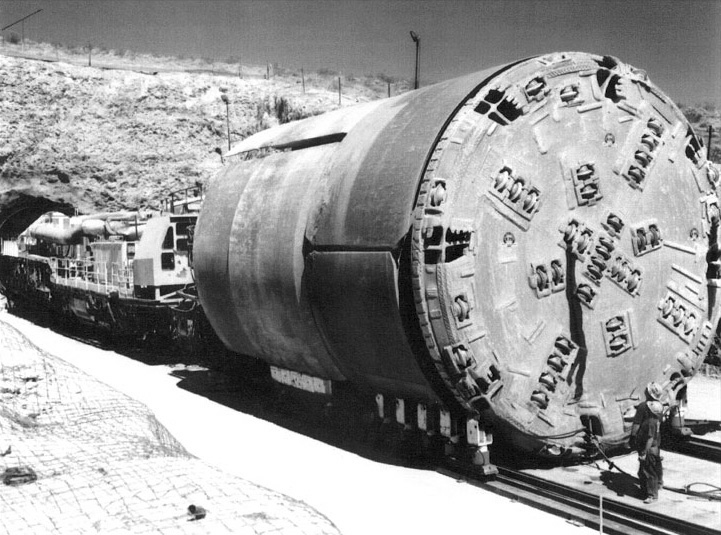Yes, it’s true: Tunneling for a future Hyperloop between the City of Baltimore and Washington, D.C. to commence. Or, so it would seem.
It would be the world’s longest (tunnel) at around 45 miles.
Indeed, earthmoving.
Relatedly, after reading Michael Laris’ Oct. 19th Washington Post article “Elon Musk’s East Coast Hyperloop will launch digging in Maryland, state and company say”, I can only say one thing: I’m stupefied.
I know, at first blush, the story that has been circulating of a Hyperloop making a Washington, D.C.-to-New York City run and doing this in 29 minutes, well, those visions seem rather far-fetched and the expectations over such being built, far-removed. I mean, as this is being written, do we know what stage of development Hyperloop is in, even? And what Hyperloop system are we talking about anyway? I am aware of three.
Getting up to speed
First order of business: For a Baltimore-D.C. run, roughly a quarter the distance of the aforementioned N.Y.-to-D.C. one, and one presumes with no in-between stops, so, what, travel time becomes a total 10 minutes tops? (Understand it may be somewhat foolish to even speculate without knowing the acceleration and deceleration rates, the maximum speed capable of being achieved and exactly what amount of time all of that would consume).

Oh, and as to the system’s first passengers, I wonder who these will be. Once that’s learned, then as pertaining to throughput, how many people in say an hour’s time can something on this order actually move? Furthermore, in terms of dirt excavated during the tunneling operation, I’m curious as to where all of those cubic yards of earth will go.
Many an unanswered question remains, obviously.
Which brings me to the part of this discussion about things to like about this plan such as system placement; that is, it’s buried in the ground and thus all elements of it are hidden from sight. Moreover, the amount of energy required for pod propulsion, based on what I now know, is comparatively small. In addition, energy can and most probably will be generated using renewable sources and related to this there will be an absence of produced emissions, so no air pollution coming from this. In terms of moving people or goods or both, I mean, who could ask for more?!
Be that as it may, you might be wondering whether Musk – of Tesla Motors and SpaceX fame (add now the Boring Company to the list, the enterprise tasked with the tunneling work) and in particular where this whole Hyperloop tunneling thing is concerned – has his priorities straight. That is to say, is committing to tunneling right now making too early a move; in other words, does such a move make sense at this time? If you remember, the Hyperloop concept was introduced to the public for the first time not all that long ago, in fact, in August of 2013 and that this very concept may be little more than a working prototype at this point. Does not one preclude the other?
On the other hand, many people are all abuzz with excitement, some talking, acting, carrying on as if this is a go. But, you know what? Until we learn differently, neither I nor anyone else can say it isn’t.
It could very well be we’re on the cusp of a whole new generation in land-based travel and transportation. As such, expect much in the way of forthcoming related info. in the days, weeks and months ahead. Stay tuned.
This post was last revised on May 3, 2020 @ 2:41 p.m. Pacific Daylight Time.
– Alan Kandel

If transport is a straight line from point A to point B, and friction is reduced to an absolute minimum, humanity will be able to travel as fast and efficiently as theoretically possible. Underground tunnels can be built laser straight and fast too – especially if several pits with TBS boring in both directions along a given right of way work to join up for the final product. Pods, or trains of pods atop a passive levitation chassis with linear motor propulsion through a vacuum sealed tunnel is almost frictionless. So there it is – hyperloop transports mankind to the theoretical speed and efficiency limit. Does it work? Every single test so far has exceeded expectations. So “yes”, it does.
From your explanation what it sounds like you’re referring to is Hyperloop One. I have been following progress on this, but I wouldn’t say really closely.
Hence the reason behind my writing: “… at first blush … those visions seem rather far-fetched and the expectations over such being built, far-removed.”